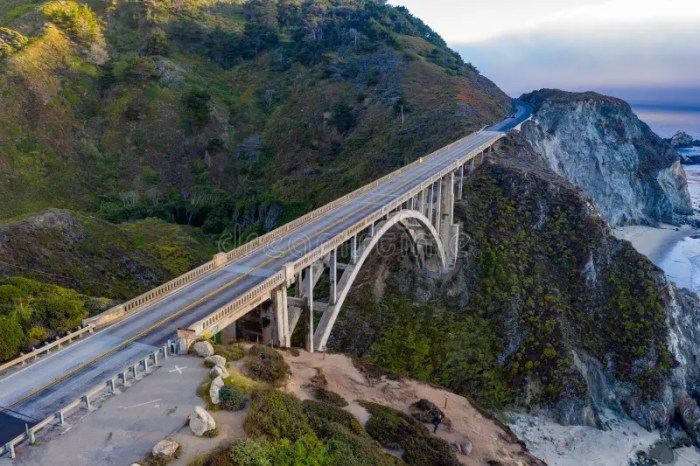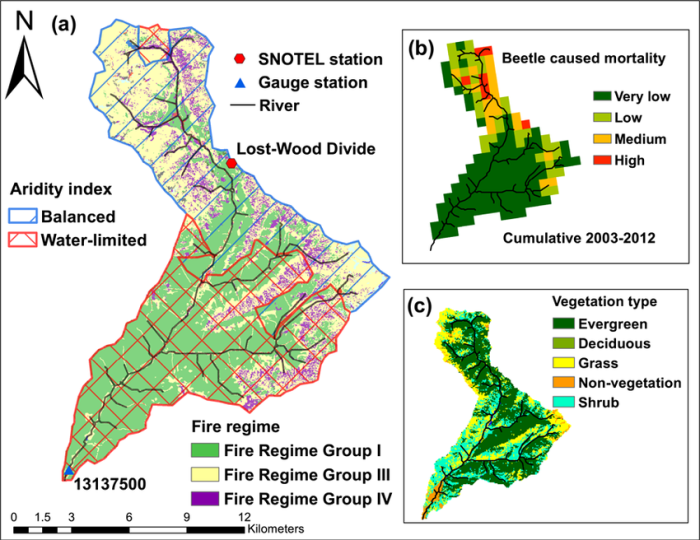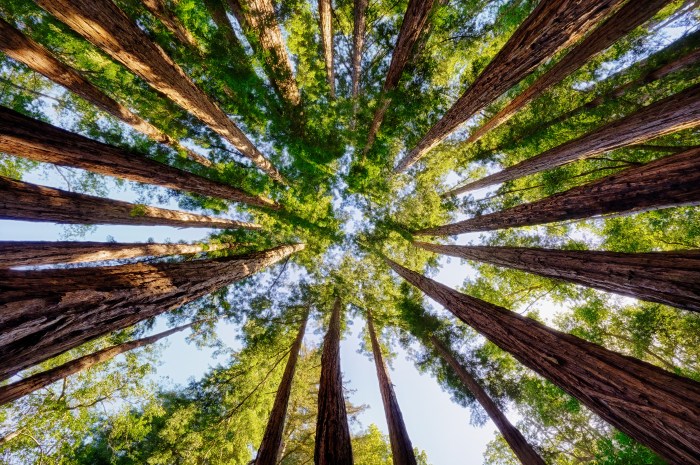Evergreen native to the rocky elevations of big sur – The rugged and awe-inspiring rocky elevations of Big Sur harbor a captivating array of evergreen plant species, each uniquely adapted to thrive in this harsh and unforgiving environment. This article delves into the fascinating world of these resilient evergreens, exploring their ecological roles, cultural significance, and the conservation challenges they face.
Big Sur’s unique microclimate, characterized by fog, wind, and nutrient-poor soils, has fostered the evolution of a distinct flora adapted to these extreme conditions. Among these are numerous evergreen species, their presence a testament to their remarkable resilience and evolutionary prowess.
Evergreen Native Plant Species in Big Sur

The rugged, rocky elevations of Big Sur provide a unique habitat for a diverse array of evergreen plant species. These plants have adapted to the harsh conditions, including nutrient-poor soils, extreme temperature fluctuations, and limited water availability, to thrive in this challenging environment.
- Scientific Name: Arctostaphylos glandulosa
- Common Name:Eastwood manzanita
- Scientific Name: Ceanothus cuneatus
- Common Name:Buckbrush
- Scientific Name: Pinus contorta var. contorta
- Common Name:Shore pine
- Scientific Name: Quercus agrifolia
- Common Name:Coast live oak
- Scientific Name: Umbellularia californica
- Common Name:California bay laurel
These evergreen species play vital roles in the local ecosystem, providing food and shelter for wildlife, stabilizing soils, and contributing to the overall biodiversity of the region.
Adaptations of Evergreens to Rocky Environments: Evergreen Native To The Rocky Elevations Of Big Sur
Evergreens have evolved specific adaptations to survive in the rocky, harsh conditions of Big Sur’s elevations. These adaptations include:
- Extensive root systems:Deep and extensive root systems allow evergreens to anchor themselves firmly in the rocky substrate and access water and nutrients from deeper soil layers.
- Sclerophyllous leaves:Thick, leathery leaves with a high concentration of sclerenchyma cells provide structural support and reduce water loss through transpiration.
- Waxy cuticles:A waxy layer on the leaf surface further reduces water loss and protects against desiccation.
- Dense branching:Dense branching patterns create a protective canopy that shields leaves from excessive sunlight and wind.
These adaptations enable evergreens to withstand the harsh conditions of rocky environments and maintain their evergreen foliage throughout the year.
Cultural Significance of Evergreens in Big Sur

Evergreens have long held cultural significance for the indigenous communities of Big Sur. The Esselen and Ohlone people used evergreens for a variety of purposes, including:
- Food:Acorns from coast live oaks were a staple food source, while manzanita berries and bay laurel leaves were used for flavoring.
- Medicine:Extracts from evergreens were used to treat various ailments, such as wounds, burns, and digestive problems.
- Shelter:Evergreens were used to construct shelters, fences, and other structures.
- Ceremonies:Evergreens were incorporated into religious ceremonies and rituals.
The cultural significance of evergreens is reflected in the stories, songs, and traditions of the indigenous communities of Big Sur.
Conservation and Management of Evergreen Habitats

The evergreen habitats of Big Sur face several threats, including:
- Climate change:Rising temperatures and changes in precipitation patterns can alter the distribution and abundance of evergreen species.
- Habitat loss:Development and land conversion can fragment and destroy evergreen habitats.
- Invasive species:Non-native plants can compete with native evergreens for resources and alter ecosystem dynamics.
Conservation measures have been implemented to protect evergreen habitats and their resident populations, including:
- Protected areas:Designating areas as parks, reserves, or wilderness areas provides legal protection for evergreen habitats.
- Habitat restoration:Restoring degraded evergreen habitats can increase the abundance and diversity of native species.
- Invasive species management:Controlling the spread of invasive species can help protect native evergreens.
- Sustainable land management:Implementing sustainable land management practices, such as responsible grazing and fire management, can minimize the impact on evergreen habitats.
By implementing these conservation measures, we can ensure the preservation of the unique and valuable evergreen ecosystems of Big Sur for future generations.
Questions and Answers
What is the dominant vegetation type in Big Sur’s rocky elevations?
Evergreen shrublands, characterized by dense stands of evergreen shrubs and small trees.
How do evergreens survive in the harsh conditions of rocky elevations?
Adaptations such as deep root systems, thick cuticles, and drought-tolerant physiology enable them to withstand extreme temperatures, water scarcity, and nutrient deficiencies.
What is the cultural significance of evergreens in Big Sur?
Indigenous communities have traditionally used evergreens for food, medicine, shelter, and ceremonial purposes.